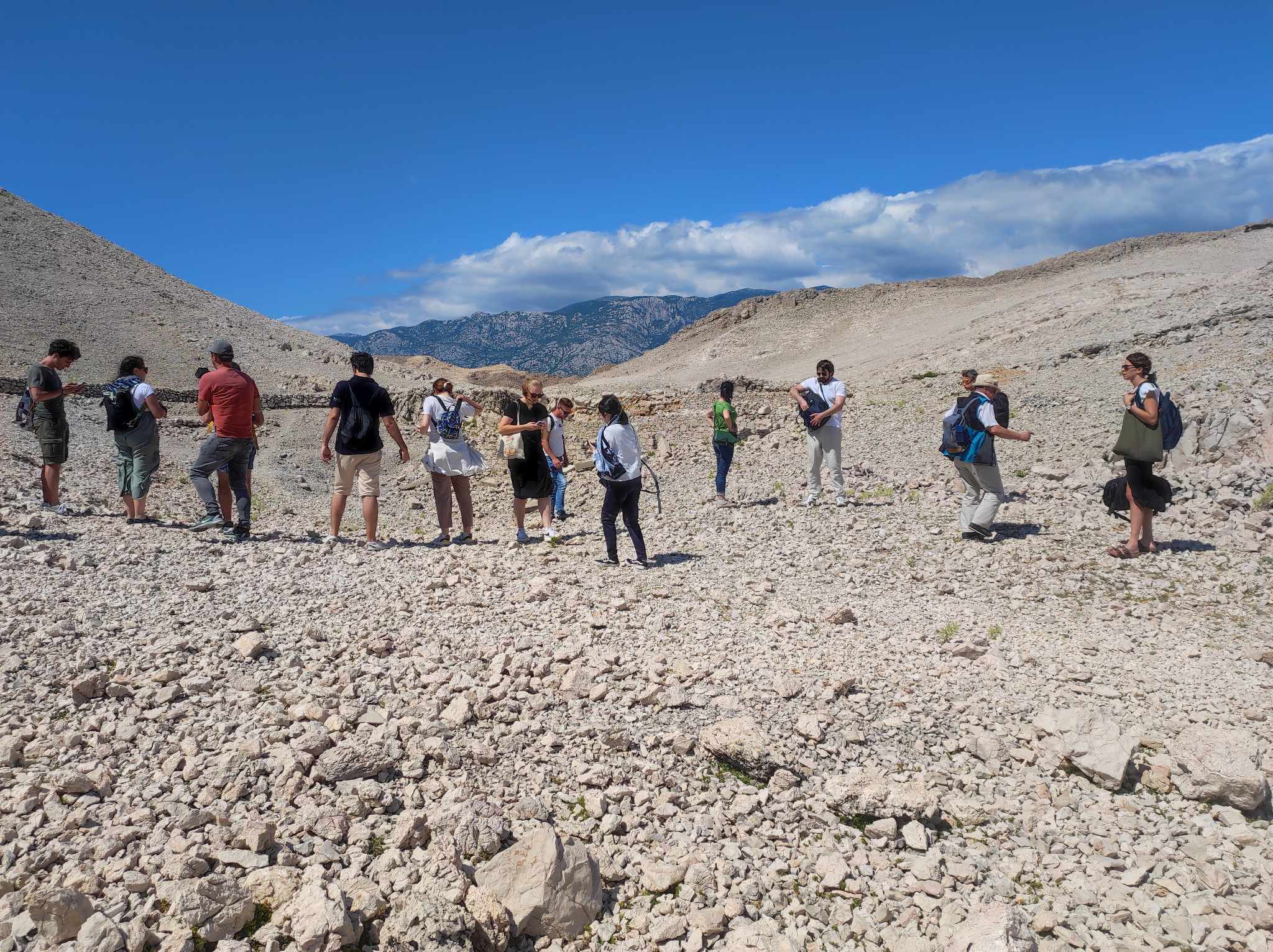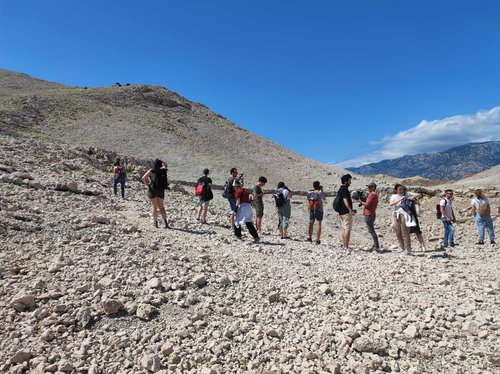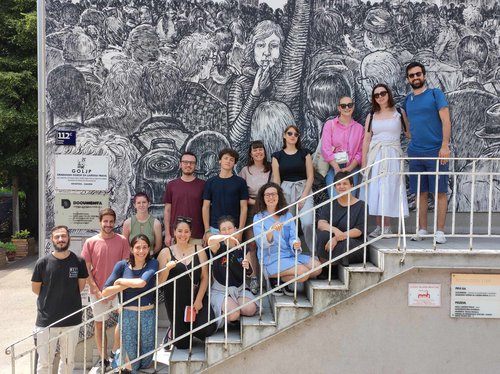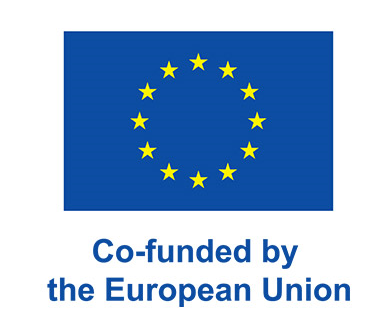BMO / Online campaign - Summer School "Between Memory and Oblivion"

The summer school organized by Documenta - Centre for Dealing with the Past in the framework of the European Union co-funded project "Between Memory and Oblivion" was held between June 24th and 26th. The summer school was attended by 20 young students and workers residing in the EU and from Croatia, Germany, Italy, and Slovenia. The topics covered included the culture of memory and remembrance and forgetting practices in Croatia, especially concerning the concentration system initiated in the Independent State of Croatia (NDH) by the Ustashas from 1941 to 1945. The NDH was proclaimed on April 10th, 1941, and lasted until the end of World War II in 1945 and included almost all of contemporary Croatia and Bosnia-Herzegovina. This can be defined as a puppet state controlled mainly by fascist Italy and Nazi Germany. It is mainly from the example of the Third Reich that the NDH started its work of deporting and killing thousands of people. The extermination activity of the Ustashas focused not only on Jews but also especially on the Serbian population residing within the State.
Among the main concentration and extermination camps prepared by the Ustashas during this period was the Gospić-Jadovno-Pag system created in one of the least populated and perhaps most hostile territories in Croatia. The main characteristic of this camp system was its brutality and effectiveness in exterminating Jews and Serbs from the NDH. The Jadovno Camp, on the slopes of Mount Velebit, was characterized by the presence of deep karst gorges in which thousands of people found their deaths. Slana Camp, on the Island of Pag, presented an absolutely hostile environment with the total absence of all forms of vegetation and a rugged landscape.
The summer school was organized by Documenta on the occasion of the annual commemoration coordinated by the Serb National Council and the Committee of the Jewish Communities of Croatia. Saturday opened with the arrival of participants and the necessary historical introduction to what would be a visit to the two camps in Jadovno and Slana the following day. Also participating was Aneta Vladimirov, vice-president of the Serb National Council, who gave a lecture on the Slana Camp from the book "Slana - radikalnu krajobraz - radical landscape." Aneta offered participants the right keys to approach the visit the following day by analyzing the importance of the camp in the Ustasha concentration system as well as its incredible cruelty and harshness. At the end of the meeting space was given to the inevitable questions of the participants who took the floor in an attempt to answer the many questions that arise whenever we are confronted with such events and testimonies.
Sunday, June 25th was the day of public commemoration at Jadovno and Slana, organized by the Serb National Council and the Committee of the Jewish Communities. The commemoration was opened by a mixed Orthodox and Jewish religious ceremony by representatives of the two religious institutions in Croatia in front of one of the foibas into which the deportees were thrown. This was followed by speeches by the President of the Serb National Council and the authorities present at the ceremony. What particularly attracted Summer School participants, beyond the incredible specificity of the area and the strong emotions felt, was a poem by Ante Zemljar engraved on one of the memorial plaques whose English translation reads:
Handed over to stone fences
We entered our night
Into the sharp stones raising to the sky
If we have not entered your conscience
You came to visit us in vain
The day continued with the arrival by the sea at Slana Beach where the camp was set up by the Ustasha near the village of Metajna on the Island of Pag. The environment that greeted the participants immediately showed itself in its harshness with Slana Beach studded with clear, sharp rocks. Just the thought of empathizing with those who passed through that beach more or less aware of their fate made everyone shudder. Virtually nothing remains of the camp built in 1941 but battered ruins and an expanse of clear rocks among which, as Aneta had foretold the previous day, there are still objects and artefacts from the camp not to be touched. Indeed, although awareness about what happened is slowly gaining momentum, thanks in part to initiatives such as the one carried out by the Serb National Council and Documenta, there is a chronic lack of attention to what remains of the camp, both physically and from a memory perspective. Beyond the hostile environment, what impressed us was the perceived spatial and mental distance of the local population from such an important place in not only Croatian but also European history.
Exemplifying this distance is the destruction of the plaques that are put up on the Slana beach from year to year (this year the Serb National Council decided not to put up any plaques due to the knowledge that they would be destroyed by the next day as has happened several times now). At the Slana site, participants were able to "get lost" a bit at the campsite to explore the impassable area independently and to reflect on what happened in 1941 on those same stones. The commemoration continued near the remains of the destroyed plaque following which white roses were distributed to all participants to lay wherever they wished at the campsite. Some decided to leave a white rose at the mercy of the waters, perhaps to mark the memory of those who were thrown into the sea in those very waters from that beach. Others decided to leave their rose underneath the supports that supported the plaque in an attempt to repel the attempted oblivion of historical memory while still others chose to leave their roses near the camp ruins among those few thorny shrubs that manage to find room to live among those sharp stones.

The last day of Summer School was dedicated to reflections and evaluation of the weekend spent together. To stimulate dialogue and conversation among the participants, small groups were created to which questions were assigned with the function of representing a common guideline for dialogue so that then it was possible to have a common moment of discussion. The first question was "What would you do with a location like Slana? Which memory practice do you think is best for this kind of location? Could you describe/draw your suggestion on the map?" Among the suggestions that emerged from the participants was an awareness of the difficulty of reaching the location as well as the difficulty of setting up information installations at the campsite due to local hostility. In this regard, two ideas mainly emerged, a first involves the affixing of QR codes, which are less impactful than information panels so that individual visitors can frame them to access a portal where they can derive the information they need to understand the nature of the place where they are. For the groups, on the other hand, there was a clear need for a trained guide who can objectively expound on the history of the Slana camp. In any case, participants raised the issue of local participation, which was seen as essential to the success of any project related to Slana. The support of the local population and primarily the village of Metajna is crucial.
The second question participants were asked to think about was about good and bad examples of memorialization of historical sites of World War II. The goal was to try to understand, through examples in their respective countries of origin, what may or may not apply in the case of both Slana and Jadovno. Among the bad examples reported by the participants was the failure to memorialise fascist and Nazi concentration camps in Italy and the lack of knowledge about these World War II sites. Beyond the most famous ones such as Fossoli or the Risiera di San Sabba, most of the other camps tend to be forgotten and their knowledge is limited mainly to scholars and those particularly interested in history. In this case, the main problem is detected in school teaching and the difficulty of dealing with difficult topics such as these. On the other hand, a positive example of memorialization is the House of the Resistance in Verbania, which arose at the site of the killing of more than 40 partisans by Nazi-fascist occupation forces in 1944. Currently, the House of the Resistance is a multipurpose building with spaces for theatrical performances and conferences, a library and exhibition spaces. To involve the population, a march is organized every year on the route taken by the partisans before they were killed.

The last part of the day was dedicated to the overall evaluation of the Summer School by the participants who expressed their satisfaction with what they had experienced in the previous days. Also emphasized was the importance of international initiatives of this kind that can bring together people from different countries and the personal growth that comes from these moments together.
Davide Bolzoni

